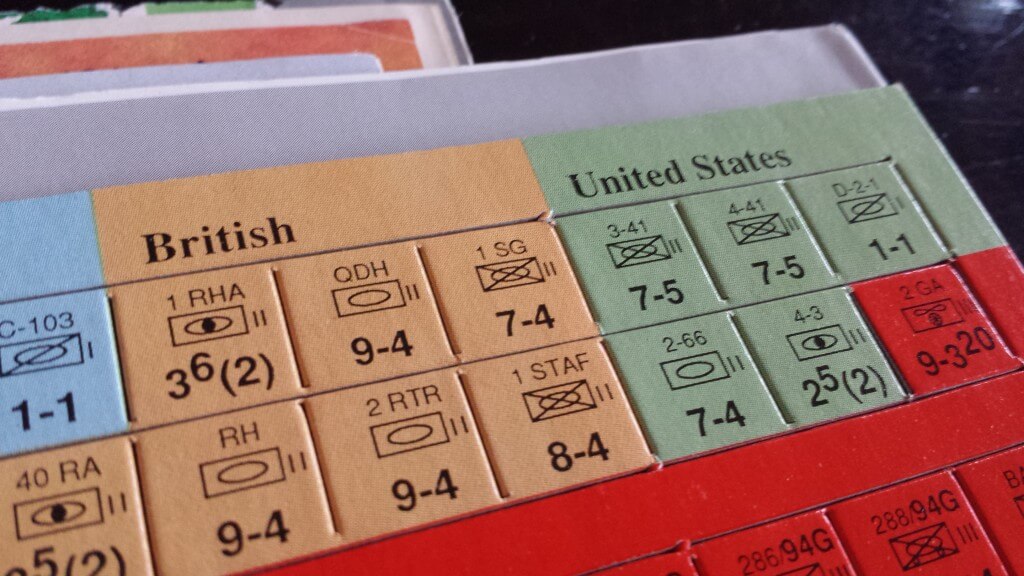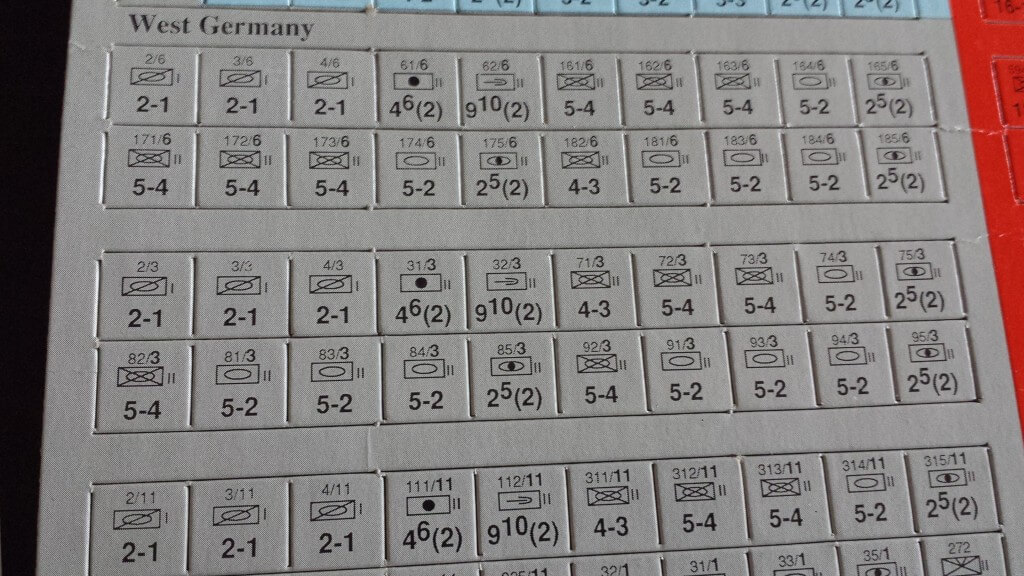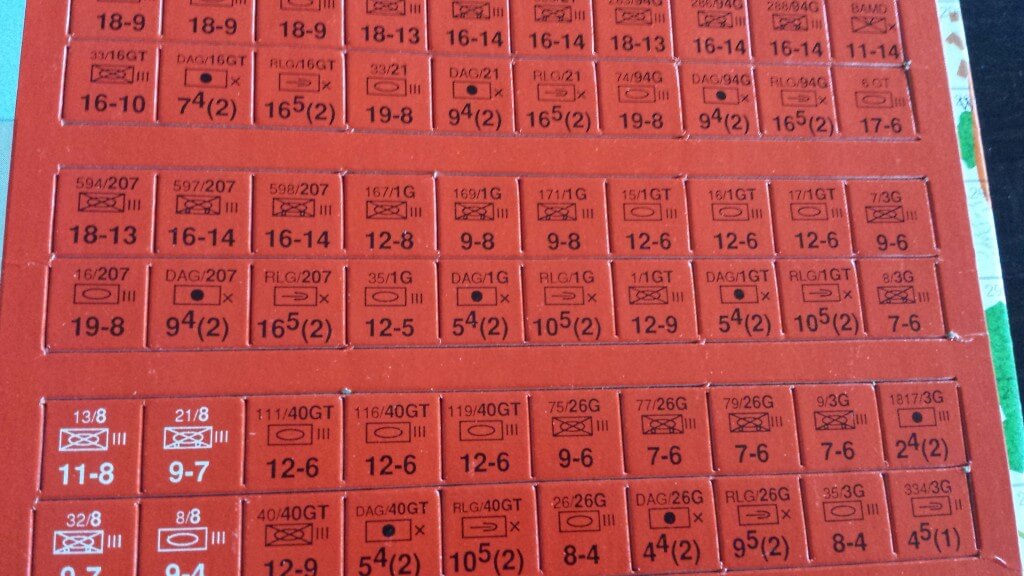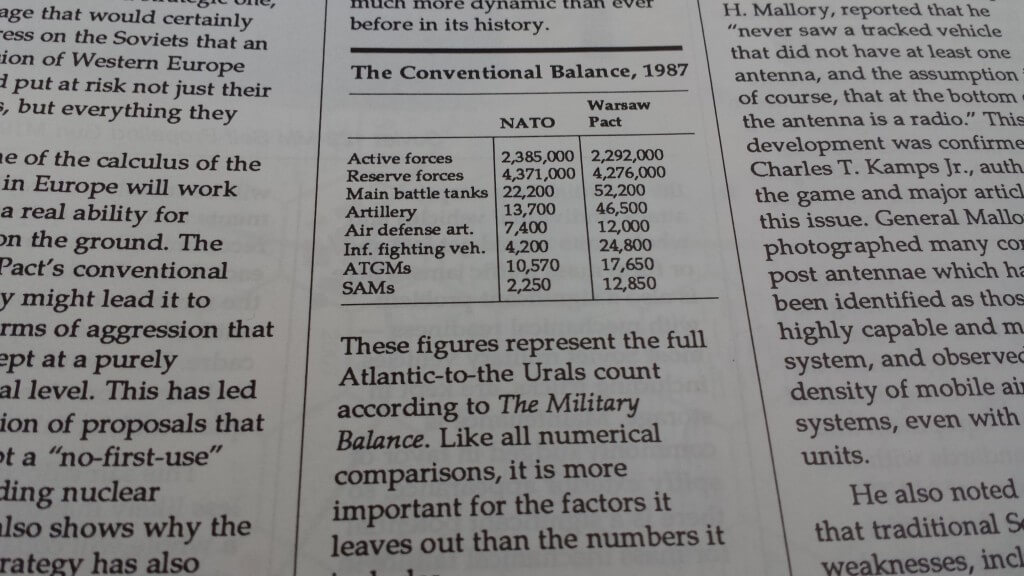I am beginning to wonder who lead this designer by the nose? A week ago we started the FIFTHCorp/HofGap/BAOR set of titles from the SPI series named Central Front.
Perhaps the 80’s were an exceptionally fluid time? Over the course of a decade this system changes three or four time that I can figure. One so substantially as to be a different game. Each time though the Soviets become stronger and stronger. Until this: 165%-180% increase in combat power per unit for the same designations. Admittedly the CRT is very different too, but more deadly to the defender. Split losses are foregone and retreats, exchanges and DE/AE results are the norm.
The www.grognard.com offered reboot of this game is starting to make more sense.
However I think I shalll first play the combined FIFTH Corps, Hof Gap and BAOR together to see what the system was like. My quick read of the last two titles rules is leaving me cold.
I think perhaps it is the pervasive negative slant on NATO ability to respond, and the maximum benefit of doubt to Soviets from Force size, capability, and timing to arms system enhancements that cruel the game for me.
It is indeed one thing to design a game based on your view point but another all together to cobble all the little data points to your view point advantage and ignore all else.
Hell even the Brits take a 50% reduction in movement rates! Dissenting views and data in the various magazines on the topic present clear evidence that shoots Kamps contentions down if not completely then at least by 1/2. The numbers below are the entire armed forces of Soviet Russia thru to the Urals!
If we assume that a 1/3 of theses forces were 3rd echelon elements and would mostly be held to secure the borders the numbers change drastically as to what could be brought to bear..
If we then looked at the resulting pool of force, and broke that into two groups. An A team and a B team, I think we would see a very different battle forming.
US armed forces in the 80’s had planners pouring over maps, looking for airstrike targets for staged units. “Where would the enemy be if they were trying to prepare a lightening strike” type of thing. The presumption that 12 hours notice would be it for NATO is just not logical nor really justifiable in any way.
Pure logistics would curtail short notice attacks. Leaving with less than 4-5 days supplies would be a disaster for the Soviet supply net. That could be interestingly tested, by shortening the Soviet supply rules up, with a 12 hour ‘surprise attack scenario’ as presented by Kamps. That said the good news is in a hypothetical – we can change the rules we dont like!
Anyway on with the game as is circa ’81.




I played these games quite a bit back in the 80’s (Fifth Corps and Hof Gap, anyway) and I remember hearing criticism about the Soviets always getting bogged down, ending up maxed out on Friction Points and unable to advance any farther. In the shorter scenarios, which were nothing but a race against time, there was some truth to it (by design, I think). But in the larger scenarios, you just had to have the discipline to alternate your Soviet columns, pushing aggressively with some while resting the others. Let a forward column secure a geographical objective, then let follow up columns bypass them and continue on to the next objective, while the first column rests (using care not to bog down the road net too much).
You also had to be very judicious about usage of EW, Chemicals and Tac Nukes. I’m going to have to dust off these games and give them a whirl to see if my recollections are foggy (or just plain wrong).
I never did warm up to the new rules that started with North German Plain. Tried playing with them exactly once, and never again. But I’m honestly not sure if the new rules sucked, or if I was just too set in my ways to accept the changes. I’ll have to take another look at those as well.
In any case, great post; it’s good to see these games getting some attention once again.
Mark great comments. The good news is I wrote this as I read the commentary and assessed the rules without play. I like to do this as it helps me see how ‘right or wrong’ I was when doing my initial assessment. I would agree so far that the Soviets do or will get bogged down. Already at the early stage of turn 2 of a combined campaign I can see this is going ot happen. FP management is key!! Also nicely realistic and puts the brakes on the Soviet juggernaut in smart way
“The http://www.grognard.com offered reboot of this game is starting to make more sense.”
Which “reboot” are you talking about? Grognards shows two variants.
The one that requires basically re making all the counters.
“The one that requires basically re making all the counters.”
So you mean the Moves 60 one. I think someone has created these counters and put on BGG. I’d have to go look. It has been some years since I played any of these games. I wouldn’t mind trying them again but making a who new set of counters might be a stopper.
I’m sorry, the remake of all the counters was on Consimworld: http://talk.consimworld.com/WebX/?14@@.ee6d04b/854
I remember a Moves article by Kamps that thoroughly examined the Soviet capability, but barely touched on any of the NATO responses to those capabilities. It was a very depressing view of NATO’s ability to defend Western Europe, and I finished the article with a strong sense of Kamps feeling that “if NATO just had more tank crews made of criminals (like mine) and everyone did everything I said, then NATO could win this”.
These Central Front games seem to reflect Kamps world view that any war was not going to end well for NATO, and without Dunnigan to bring it back to the notion that “its a game”, Kamps’ tinkering just seem to make the each iteration of the game worse.
Phew..so I’m not the only one. As I play I can see what a cool game it is. Yet his writing in game and around the game in articles paints such a drastic worst case as to build the ‘why fucking bother to play mentality’. That said the original game system is very very nice. It has several clever and engaging thought provoking aspects to it. More on that later.